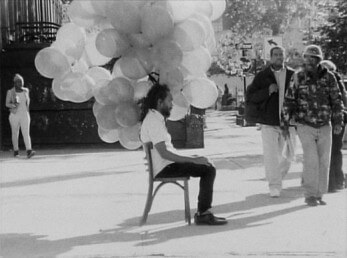In 1909 the Italian poet (and consummate self-publicist) Filippo Tommaso Marinetti introduced Italian Futurism to an international audience, through the publication of his first Futurist manifesto on the front page of leading Parisian newspaper La Figaro. Launched into the heart of the art world, Marinetti’s manifesto promoted Futurism as a new art borne of violent struggle, explicitly rejecting Italy’s status as the center for art of the past, with phrases such as “Set fire to the library shelves!”
The work of Russell Maltz hovers in the fragile beats between two frequencies. One is the mark-making impulse of the human, while the other is the homogenous system of distribution of the inhuman. In his assemblages of generic building materials—concrete masonry units (cmu), metal studs, PVC pipes, and plywood—there are actions and operations rather than conceptual compositions. Thus the show title situates Maltz’s work as neither self-consciously elevated nor counterproductive.
The title of the group exhibition at David Castillo Gallery, Metabolic Bodies, implies that the strategy of using manipulated readymades is a corporeal action, a chemical change that transforms a substance (in this case found images or objects) into energy.
Richard Hamilton famously claimed that for him, Braun’s industrial design was as inspirational as Mont Sainte-Victoire was for Paul Cézanne. The sleek modern lines of Braun’s eponymous toasters were his phenomenological muses. This analogy provides great insight into Hamilton’s eclectic body of work.
The exhibition is strewn about the Museum of Art Fort Lauderdale. “Scattered… as stepping stones for the viewer’s passage through time and space” says the museum’s materials. The videos’ peppered arrangement falls quickly into place, acting as nodes of cultural critique, autonomously growing in the rubbed joints of the museum’s authority. Fabri’s “Me and Them” (2005) is one of the first pieces you encounter upon entering the museum’s expansive lobby.





